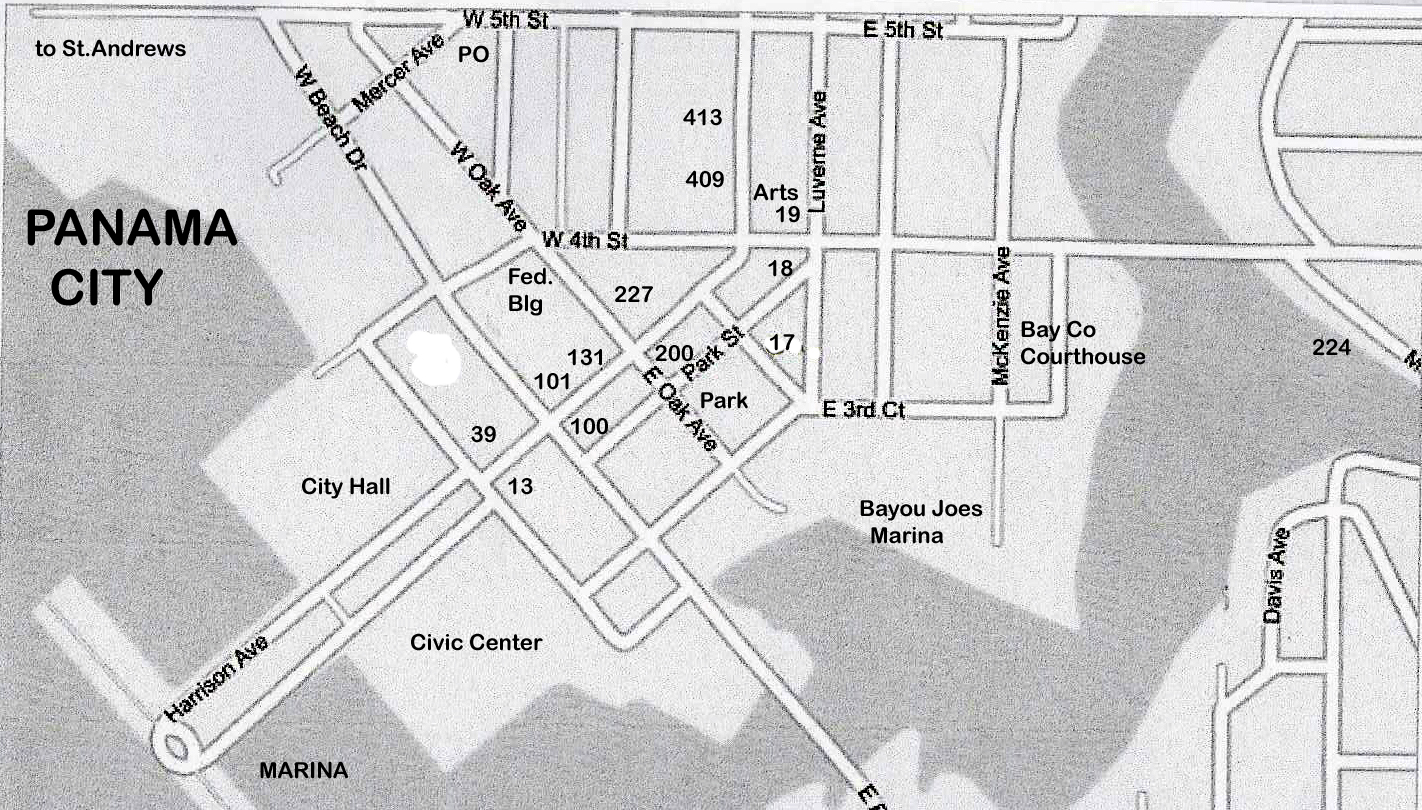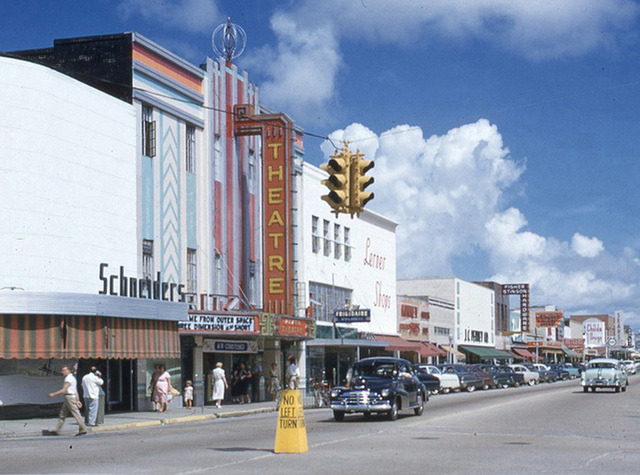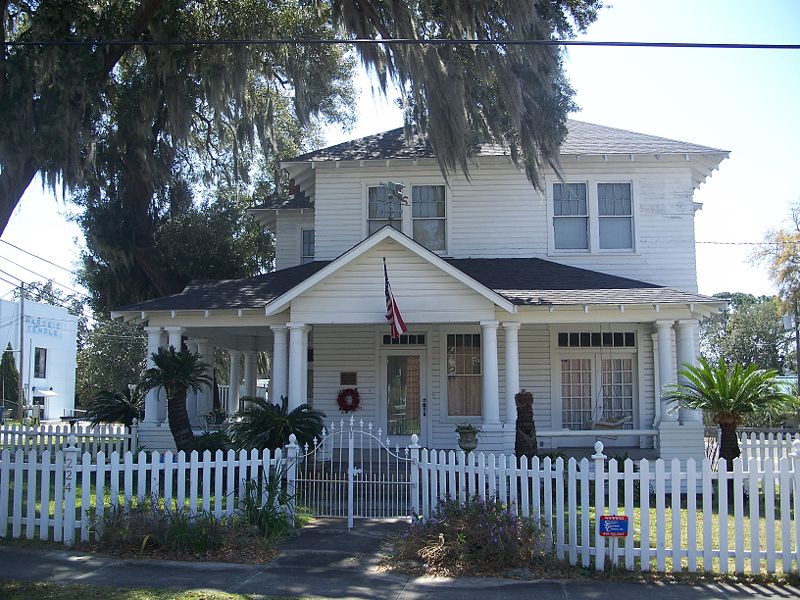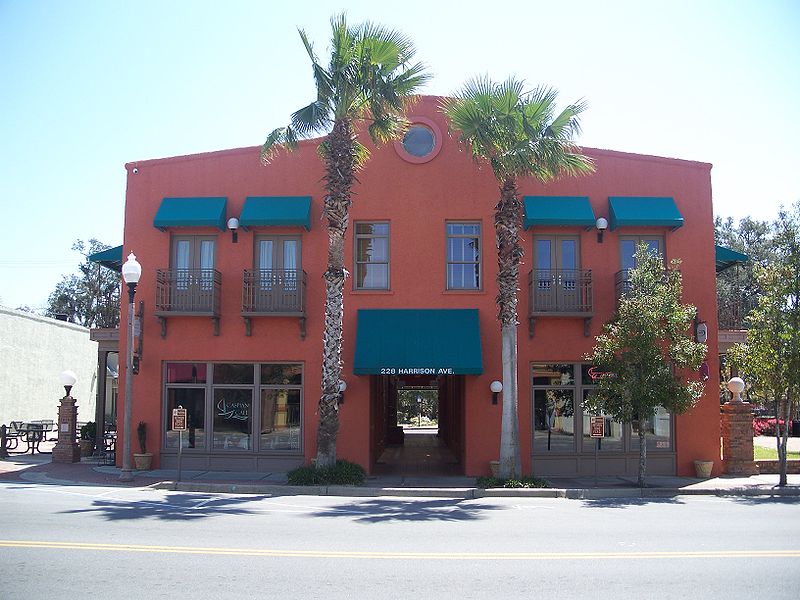000 PANAMA CITY DOWNTOWN GUIDE
PANAMA CITY - IT IS MORE THAN A BEACH

Most visitors who vacation on Panama City Beach, barely visit the real city of Panama City. Compared to its glamorous
beachside little sister Panama City Beach, the town of Panama City is a large bayside residential community serving Tyndall
Air Force Base to the east and the booming beach and bay suburbs to the
west side. Panama City is the largest
town between Pensacola and Tallahassee and, if you are staying in the area,
worth a drive into the downtown area. Large buildings and fancy condos are not part of downtown Panama City
which has a small town laid-back appearance and an almost empty-looking
waterfront except for the large marinas.
TOURING PANAMA CITY by automobile is usually easy for there are lots of
parking spaces along the main drag of Harrison Avenue and at key public
buildings. To reach downtown from the
hotel strip of Panama City, drive east over Hathaway Bridge, continue east on
US 98 (W 15th Street) and turn right (south) on Harrison. Use the map once you get to the marina at the
end of Harrison to decide what to do - you've already driven past the downtown
shops.
The town obtained its name in 1900 when developer George West discovered his bayside site was about halfway between his native Chicago and Panama City, Panama. He was never thinking the beach would dominate the potential farming and lumbering in the region. HERE ARE SOME OF THE SIGHTS TO LOCATE:
PANAMA CITY HALL at 9 Harrison has parking if there is lunch time traffic in the downtown
area. Across the way is the large PANAMA CITY CIVIC CENTER which hosts
most of the big attraction events in the region.
JOSEPH DYER BUILDING at 13 Harrison next to Harrison House Furniture is a
non-descript 1910 white building brought to the site from Sandy Creek by boat
to become the first brick structure in the town. At 39 Harrison is the ELLIS & COLEMAN BUILDING, redesigned in 1933 to become the Bay
Theater.
Across the street in the
next block at 100 Harrison is the two-story 1911 WILKERSON BUILDING, used as the first town bank, a post office and
the town telephone company. Opposite it
at 101 Harrison is 1915 terra cotta FIRST
NATIONAL BANK with its famous 1926 street clock, a symbol for downtown. A few doors down is the 1933 ROY VAN KLEECK BUILDING (131 Harrison)
with its original pine flooring.
A National Register building
is the lovely 1934 W. C. SHERMAN ARCADE
at 228 Harrison Avenue with a nice two-story atrium. Opposite it is the 1926 COMMERCIAL BANK, built with buff brick and Indiana limestone in an
unusual Georgian Colonial Revival style.
At 318 Harrison is the 1926 two-story brick FLEMING FOLKES BUILDING, with a facade almost original to the Land
Boom days.




You could go East of 4th Street
(see map options), but we'll finish Harrison since the 400 block has two main
structures.The RITZ or MARTIN THEATER at 409 Harrison was built in the Art Deco style and today
houses an art and performance center. The J S. WILSON
FURNITURE and HARDWARE BUILDING (1926) is a three-story brick building that
houses the City Information Bureau.
If you drive down 4th you
won't miss the OLD CITY HALL, a 1926
Mediterranean Revival beauty which is headquarters for the Visual Arts Center. The J. ED
STOKES BUILDING at 18 East 4th Street was the law office of the long time
State Senator. The 400 block is the 1915
BAY COUNTY COURTHOUSE, probably remembered by many as the site of the Gideon case.
Third Street starts more
residential homes and the JUDGE J.
MERCER SAPP HOUSE (1916), with its first elevatorand hot water, is the most impressive
home in Bay County. At 17 East 3rd
Street is the 1909 ROBERT McKENZIE HOUSE, a two
story-clapboard frame. Both of these homes are on the National Register of
Historic Places.